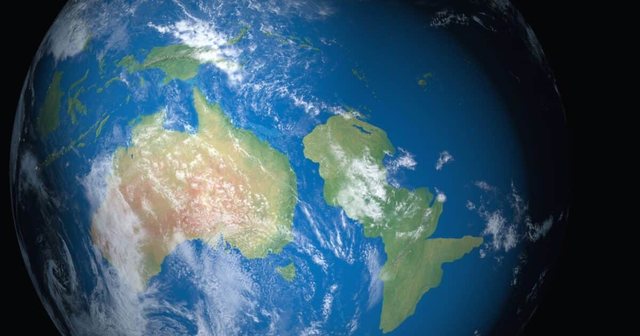
Revolutionary theory discovered that could rewrite the history of Earth's first continents


New research has dramatically reshaped our understanding of Earth’s early geological history, upending traditional beliefs about how the planet’s first continents formed. Researchers from the University of Hong Kong (HKU) have published a study in Science Advances suggesting that deep mantle plumes, not plate tectonics, were responsible for the formation of Earth’s earliest continental crust. The discovery presents a new model of geological activity that challenges the long-held view of continental growth driven by subduction.
While the traditional theory of plate tectonics suggests that early continental crust was formed through the collision and subduction of tectonic plates, the latest HKU research points to a different source. According to Dr. Dingyi Zhao, lead author of the study, “Our results provide strong evidence that Archean continental crust did not have to be formed through subduction. Instead, a two-stage process involving mantle plume uplift and gravitational subduction of greenstones best explains the geochemical and geological features observed in the Eastern Block.” This insight has important implications for the study of both Earth and planetary science.
The Earth's unique continental crust has long been a subject of debate among geologists. Traditionally, the theory of plate tectonics has been considered to be the cause of the formation of the planet's land masses through subduction zones, where one tectonic plate sinks beneath another. It was thought that the resulting geological activity drove the creation of early continental crust, a process that gradually shaped the Earth's outer layer.
However, recent findings led by Dr. Zhao and his team suggest a completely different process was at play during the Archean period. Their study, which focuses on ancient rocks from northern China, reveals that mantle plumes – massive upwellings of molten rock from deep within the Earth – may have played a central role in the creation of early continents. This theory suggests that Earth’s first land masses formed not through tectonic collisions, but as a result of deep mantle convection that brought hot material to the surface, where it cooled to form crustal material.
Për të mbështetur këtë pohim, ekipi i kërkimit analizoi shkëmbinj granitoide të lashtë, konkretisht TTG-të (tonalite–trondhjemite–granodiorite), të cilët gjenden në disa nga kores kontinentale më të vjetër. Këta shkëmbinj, që datojnë 2.5 miliardë vjet më parë, përmbajnë minerale të njohura si zirkonë, të cilët ruajnë nënshkrimet kimike që nga koha kur u formuan shkëmbinjtë. Duke studiuar këto zirkonë, studiuesit zbuluan se shkëmbinjtë u formuan në kushte që ishin më në përputhje me aktivitetin e tymrave të mantelit sesa me zonat e subduksionit.
Dr. Zhao dhe kolegët e tij propozojnë një proces me dy faza për formimin e kontinenteve më të hershme të Tokës. Faza e parë, e cila ndodhi rreth 2.7 miliardë vjet më parë, përfshinte formimin e grumbujve të trashë të bazaltit në shtratin e detit, të nxitur nga një re manteli që ngrihej nga brendësia e thellë e Tokës. Këto bazalte, të pasura me hekur dhe magnez, siguruan materialin fillestar për zhvillimin e mëvonshëm të kores kontinentale.
Faza e dytë e procesit ndodhi rreth 2.5 miliardë vjet më parë, kur një tjetër re manteli shkaktoi shkrirje të pjesshme të shtresave të poshtme të këtyre shkëmbinjve bazaltikë. Ky proces çoi në formimin e shkëmbinjve më të lehtë, të njohur si TTG, të cilët janë përbërësit kryesorë të kores kontinentale. Ky model me dy faza shpjegon se si materiali bazaltik mund të shndërrohet në shkëmbinj granitikë më lundrues që përfundimisht formuan kontinentet.
Dr. Zhao theksoi rëndësinë e këtyre gjetjeve, duke deklaruar: “Rezultatet tona ofrojnë prova të forta se korja kontinentale Arkeane nuk duhej të formohej përmes subduksionit. Në vend të kësaj, një proces me dy faza që përfshin ngritjen e tufës së mantelit dhe sagduksionin gravitacional të gurëve të gjelbër shpjegon më mirë tiparet gjeokimike dhe gjeologjike të vëzhguara në Bllokun Lindor.”
Studimi jo vetëm që ofron një vështrim të ri mbi formimin e kontinenteve të para të Tokës, por gjithashtu kontribuon në kuptimin tonë të gjeodinamikës së hershme të Tokës. Duke identifikuar retë e mantelit si një lojtar kyç në formimin e kores së planetit, hulumtimi sfidon teoritë ekzistuese dhe nxjerr në pah rolin e proceseve të brendshme të Tokës në formësimin e sipërfaqes së planetit.
Ky model i ri thekson gjithashtu rëndësinë e proceseve gjeologjike si sagduksioni, ku shkëmbinjtë më të rëndë zhyten në brendësi të Tokës nën peshën e tyre. Ky proces, i kombinuar me aktivitetin e tymit të mantelit, mund të ketë kontribuar në formimin e nënshkrimeve gjeokimike të vërejtura në shkëmbinjtë e lashtë. Profesori Fang-Zhen Teng nga Universiteti i Uashingtonit, një bashkautor i studimit, vuri në dukje: “Kjo punë është një kontribut i madh në studimin e gjeodinamikës së hershme të Tokës. Përdorimet tona të ujit të zirkonit dhe izotopeve të oksigjenit kanë ofruar një dritare të re të fuqishme në formimin dhe evolucionin e kores së hershme kontinentale.”
These findings have profound implications not only for the study of Earth's history, but also for our understanding of other planetary bodies. By understanding the processes that shaped Earth's early crust, scientists can apply this knowledge to better understand the geological histories of exoplanets and other celestial bodies in our solar system.

The Ukraine summit that ignored the tough questions
ideas
top
Alfa recipes
TRENDING 
services
- POLICE129
- STREET POLICE126
- AMBULANCE112
- FIREFIGHTER128





























